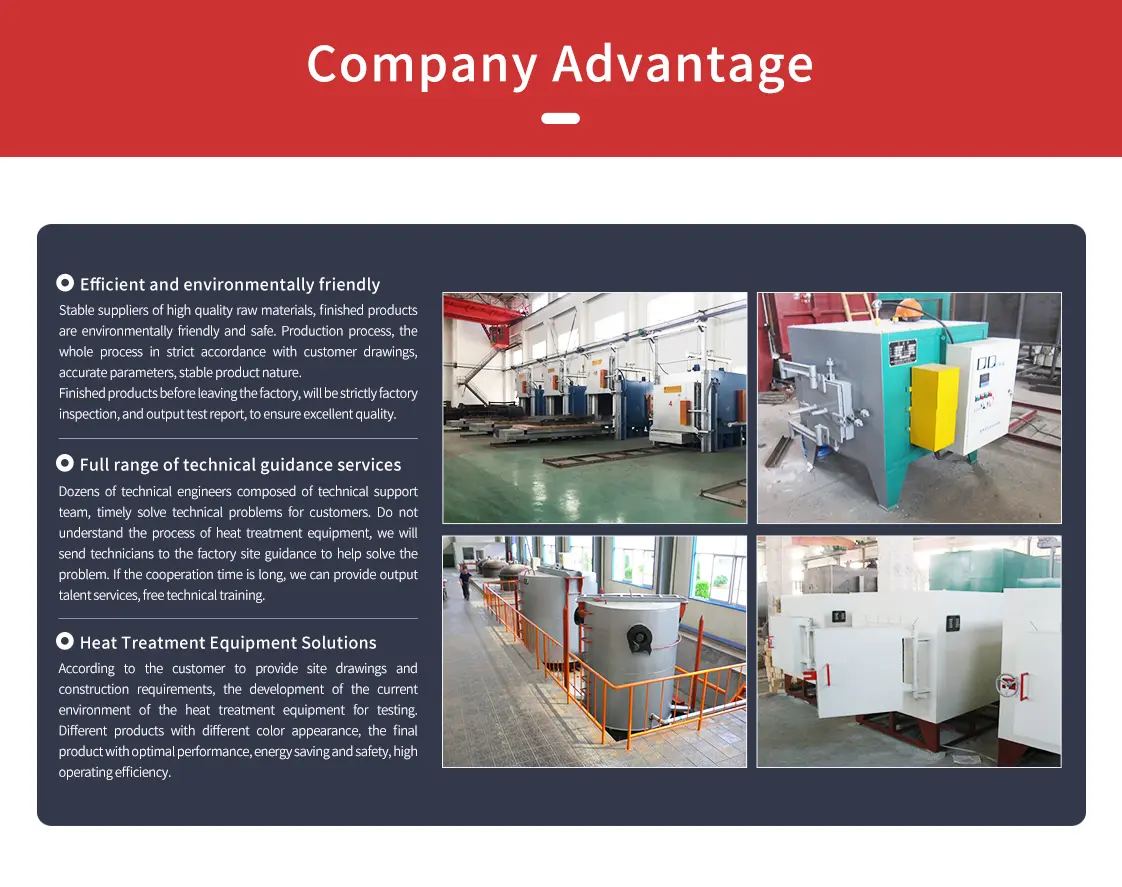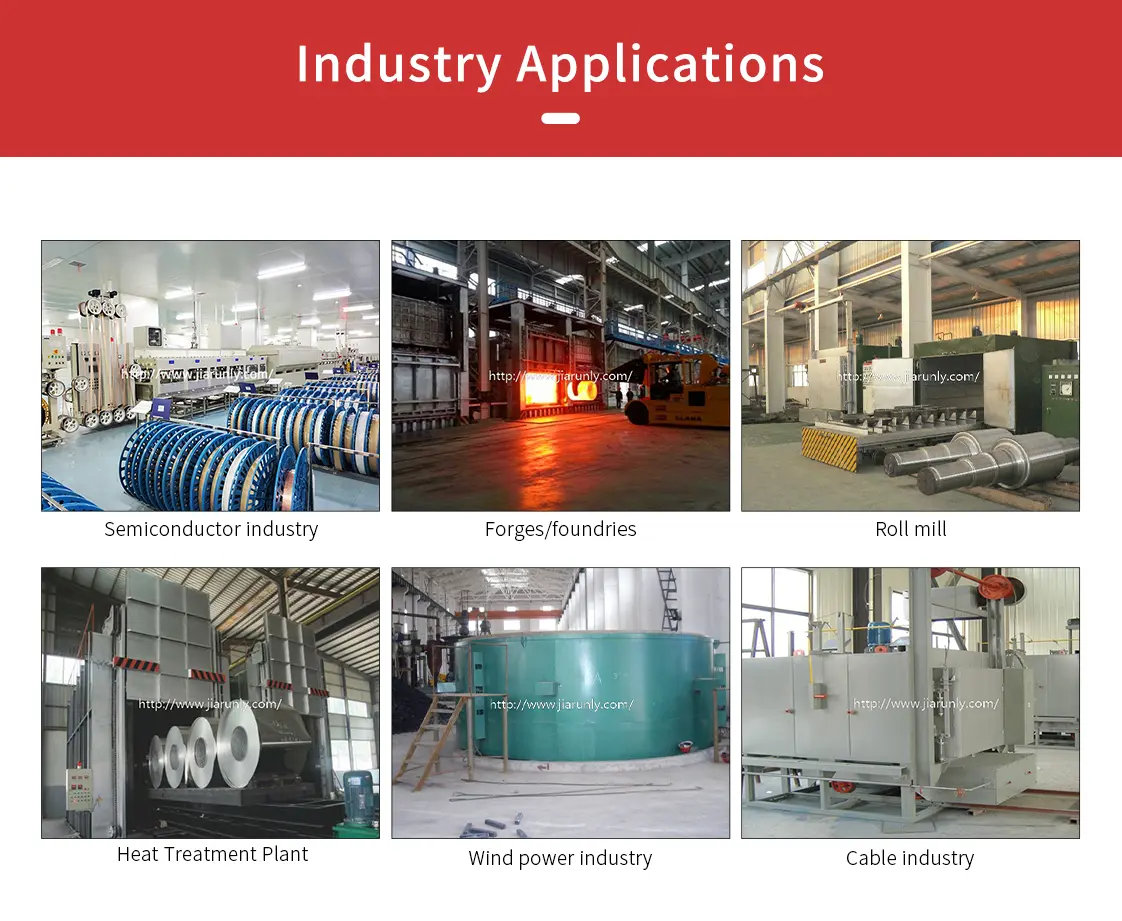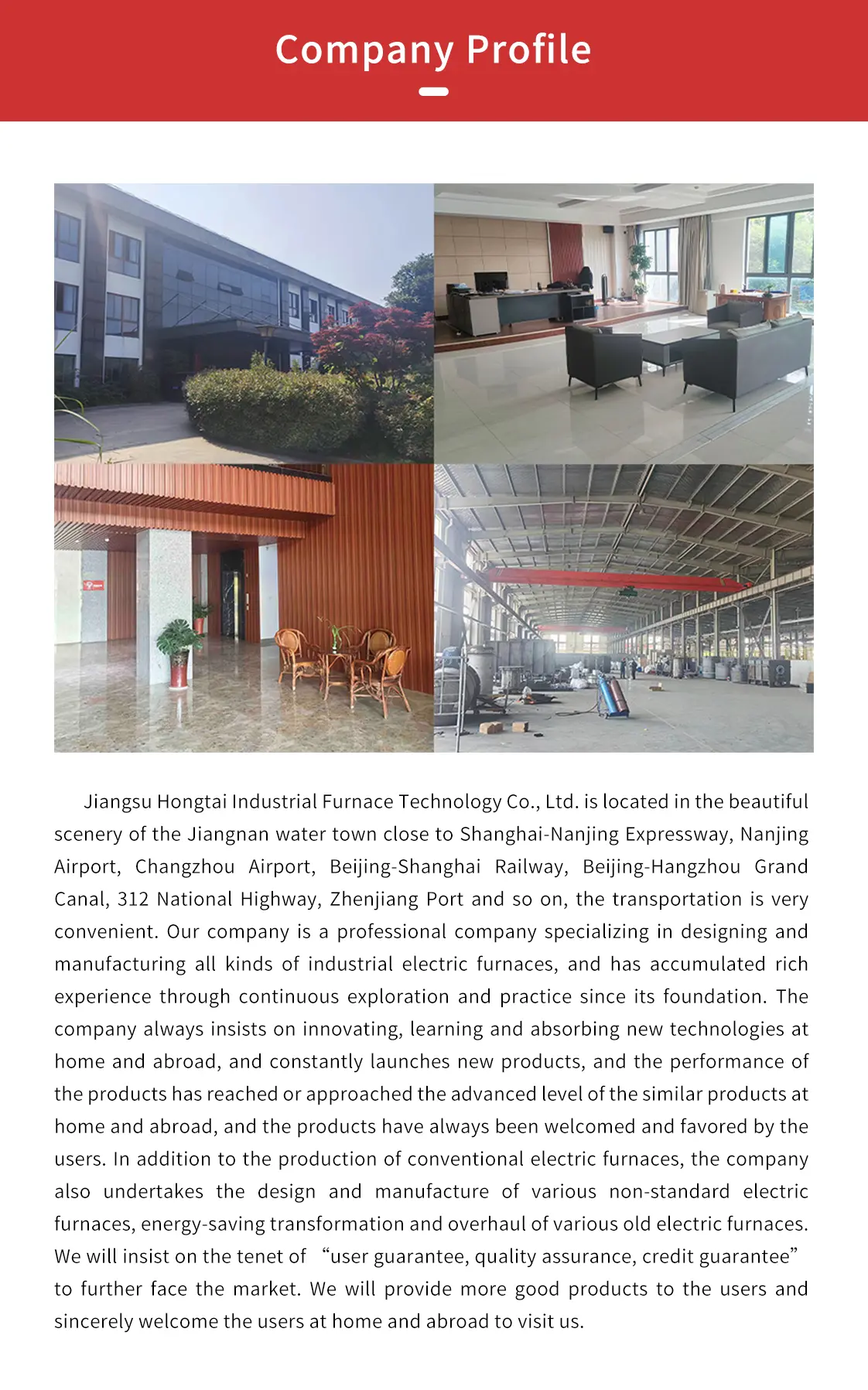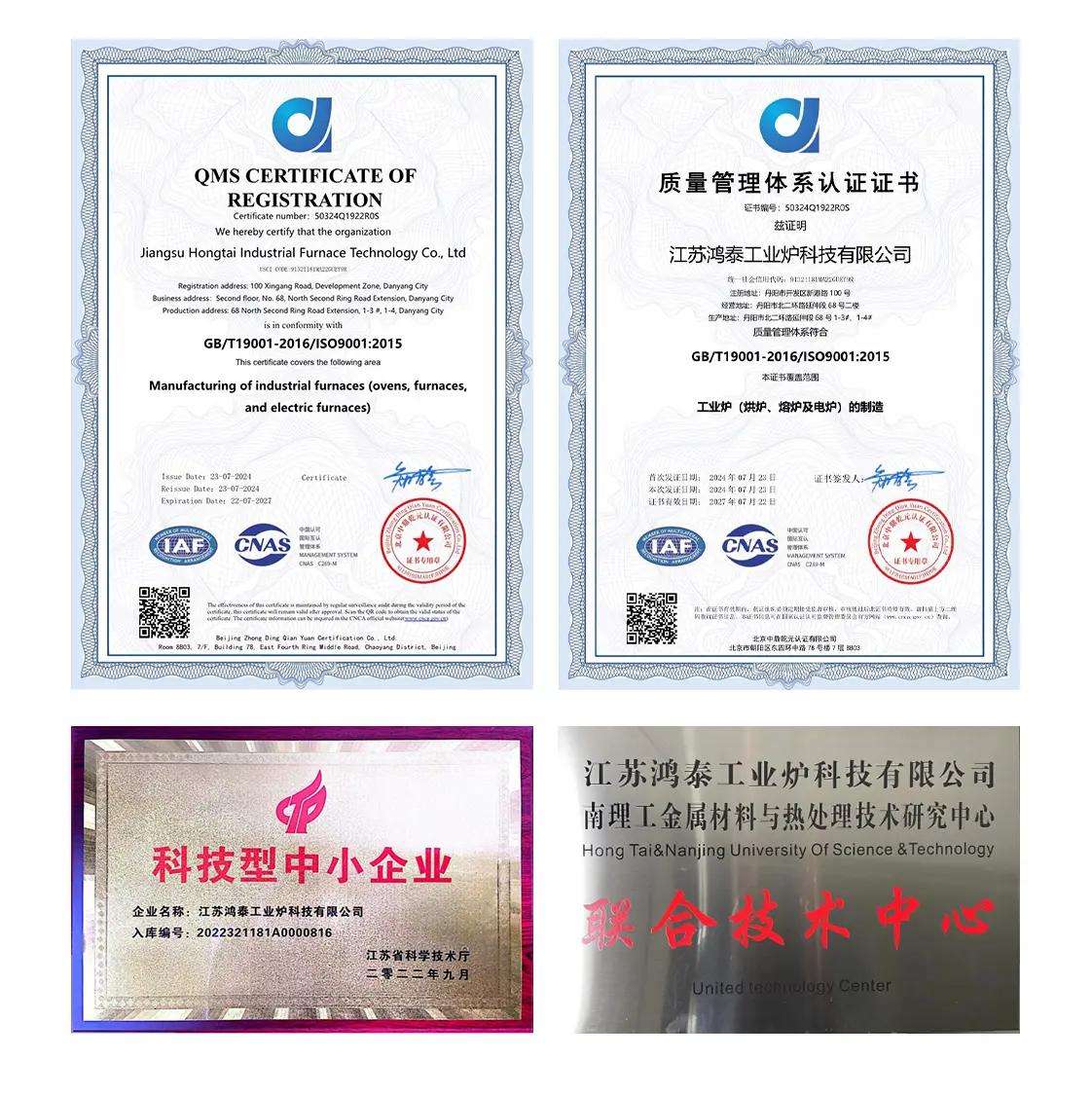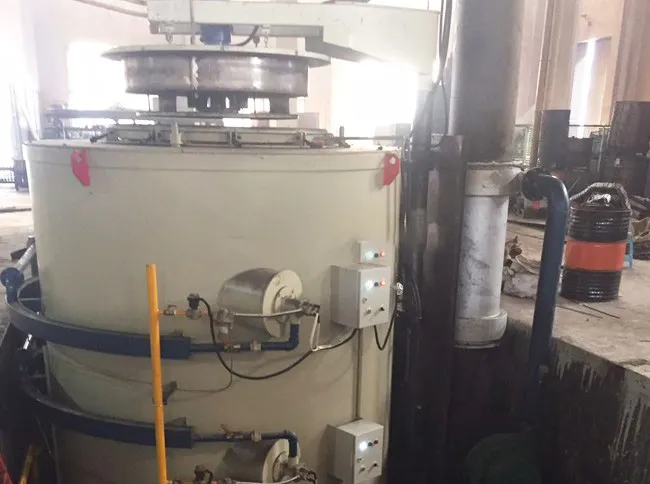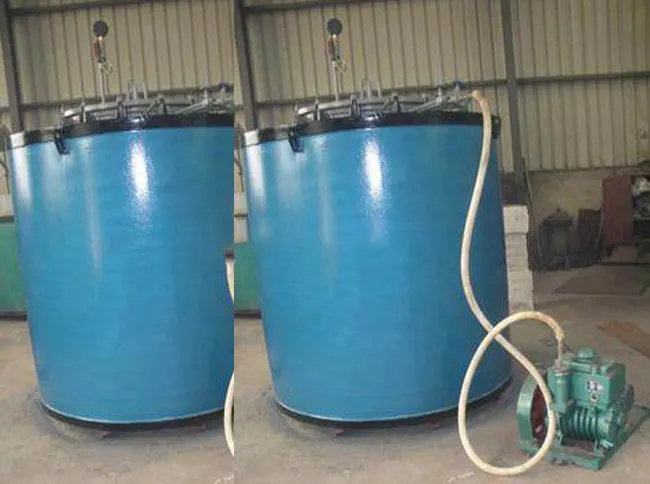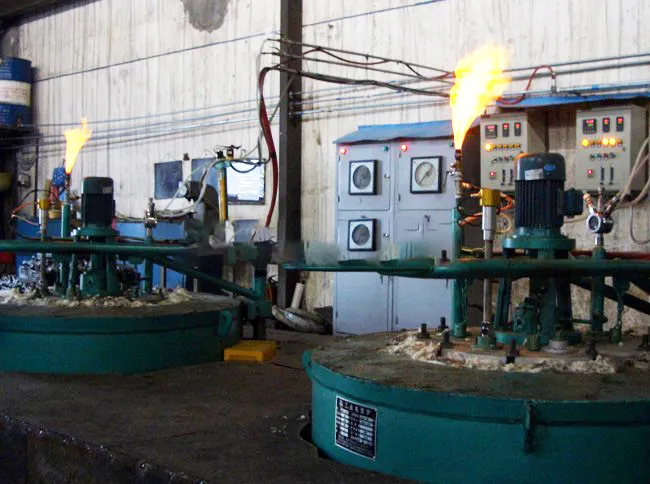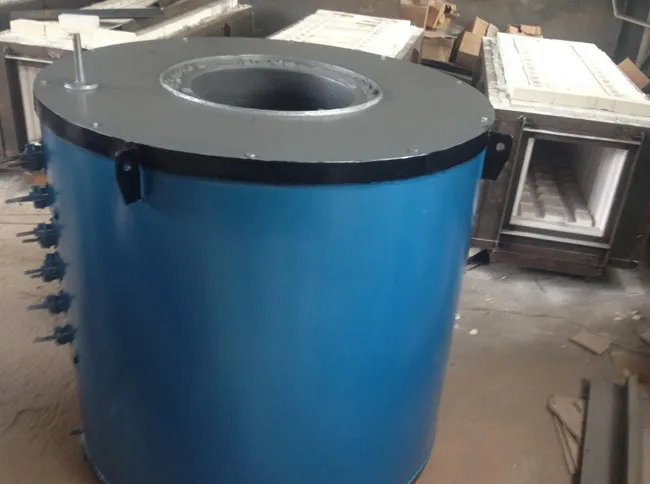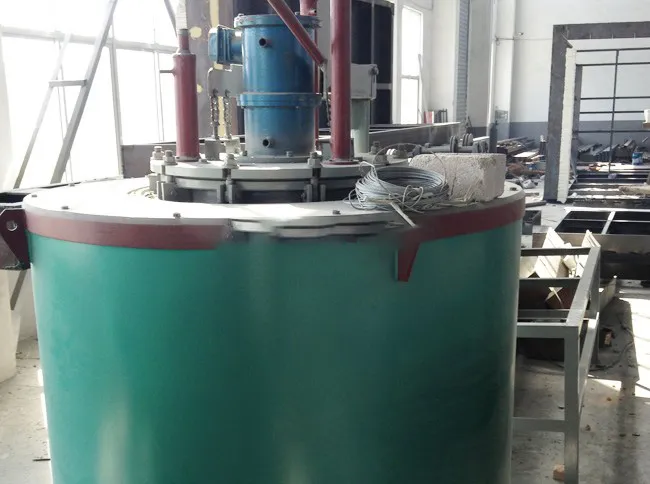- Vacuum furnace & oven
- Annealing Furnace & Oven
- Tempering furnace & oven
-
Carburizing furnace & Ovens
-
Bell Type Furnace
-
Pit Type Furnace & Well Type Furnace
-
Box Furnace & Chamber Furnace
-
Car Bottom Furnace & Bogie Hearth Furnace
-
Nitriding furnace & Ovens
-
Melting furnace & Ovens
- Quenching furnace & Ovens
-
Rapid quenching furnace & Ovens
- Forging furnace & Ovens
- Bright heat treatment furnace & Ovens
Carburizing Furnace & Ovens
Heat treatment furnace manufacturer,Jiangsu Hongtai Industrial Furnace Technology Co., Ltd
Carburizing furnace consists of furnace shell, furnace lining, lid lifting mechanism, furnace sealing fan, muffle tank, heating element and electric control system. The furnace shell is welded by steel plate and section steel.
Carburizing Furnace & Ovens
Precision Case Hardening Solutions for Enhanced Surface Properties of Steel Components
Product Introduction
Our Carburizing Furnaces & Ovens are advanced heat treatment systems designed for precision case hardening of steel components. Carburizing is a thermochemical process that diffuses carbon into the surface of low-carbon steel, creating a hard, wear-resistant case while maintaining a tough, ductile core. This process significantly enhances surface hardness, wear resistance, and fatigue strength, making it ideal for components subjected to high stress and wear, such as gears, shafts, bearings, and automotive parts. We offer various types of carburizing furnaces, including gas carburizing and vacuum (low-pressure) carburizing, to meet diverse material and application requirements. Our furnaces ensure precise control over carbon potential, temperature, and time, leading to consistent and high-quality results.
Core Advantages for Superior Case Hardening
- Enhanced Surface Hardness: Creates a high-carbon surface layer, significantly increasing the hardness and wear resistance of steel components.
- Improved Fatigue Strength: Introduces compressive residual stresses in the case, which improves the fatigue life of components subjected to cyclic loading.
- Tough Core: Maintains the original toughness and ductility of the core material, providing a combination of surface hardness and core strength.
- Precise Case Depth Control: Advanced control systems allow for accurate regulation of carburizing parameters, enabling precise control over case depth and carbon profile.
- Minimal Distortion: Optimized heating and quenching strategies minimize distortion and dimensional changes, reducing the need for post-treatment machining.
- Versatile Application: Suitable for a wide range of low-carbon and alloy steels, for various component geometries and sizes.
- Automated & Safe Operation: Integrated PLC control with comprehensive safety interlocks, real-time monitoring, and data logging for reliable and secure operation.
Technical Specifications
| Parameter | Unit | Range/Value | Notes |
|---|---|---|---|
| Maximum Working Temperature | °C | 850 - 1050 | Typical carburizing temperature range |
| Carburizing Method | - | Gas Carburizing, Vacuum Carburizing | Selectable based on application and material |
| Atmosphere Control | - | Endothermic gas, Propane, Methane, Acetylene (for vacuum) | Precise carbon potential control |
| Rated Power | KW | 30 - 300 | Efficient heating systems |
| Working Chamber (W×H×L or Dia. × Depth) | mm | Customizable | Available in various sizes and configurations (pit, box, bell) |
| Temperature Uniformity | °C | ±3 (typical) | Ensures consistent carbon diffusion |
| Control Accuracy | °C | ±1 | Advanced PID control |
| Case Depth Achievable | mm | 0.2 - 2.0 | Process-dependent |
| Quenching Medium | - | Oil, Gas (Nitrogen, Argon) | Integrated quenching systems |
| Control System | - | PLC + Touchscreen HMI | Advanced automation and data logging |
| Safety Features | - | Gas leak detection, Over-temperature protection, Emergency shutdown | Ensures safe operation |
Working Principle
Carburizing is a thermochemical heat treatment process used to increase the carbon content on the surface of low-carbon steel components, thereby enhancing their surface hardness, wear resistance, and fatigue strength. The core principle involves diffusing carbon atoms into the steel surface at elevated temperatures, typically between 850°C and 1050°C, followed by quenching to transform the high-carbon surface into a hard martensitic structure.
In Gas Carburizing, components are heated in a furnace containing a carbon-rich atmosphere, usually generated from endothermic gas, propane, or methane. At high temperatures, carbon atoms from the gas atmosphere are absorbed by the steel surface and diffuse inwards. The carbon potential of the atmosphere is precisely controlled to achieve the desired carbon concentration gradient and case depth. After the diffusion stage, components are typically quenched directly from the carburizing temperature into oil or a high-pressure gas to achieve the required hardness. This is often followed by a tempering process to reduce brittleness and improve toughness.
In Vacuum Carburizing (also known as Low-Pressure Carburizing), components are heated in a vacuum, and then a carbon-rich gas (like acetylene or propane) is pulsed into the chamber at low pressure. This method offers advantages such as cleaner surfaces, reduced intergranular oxidation, and more uniform carbon penetration, especially for complex geometries. After the carbon diffusion, components are typically quenched with high-pressure inert gas (e.g., nitrogen or argon) directly within the vacuum furnace. This eliminates the need for external quenching tanks and reduces distortion.
Both methods rely on precise control of temperature, carbon potential, and time to ensure the formation of a consistent and effective hardened case. Our furnaces are equipped with advanced control systems to monitor and regulate these parameters, ensuring repeatability and high-quality carburized components for demanding applications.
Process Flow
Pre-treatment & Loading
Components are cleaned and prepared, then loaded into the carburizing furnace chamber.
Heating & Atmosphere Introduction
Components are heated to carburizing temperature, and a carbon-rich atmosphere is introduced.
Carbon Diffusion & Soaking
Carbon atoms diffuse into the steel surface for a specified duration to achieve desired case depth.
Quenching & Tempering (Optional)
Components are quenched to harden the case, often followed by tempering to optimize properties.
Solving Customer Pain Points
Achieving High Surface Hardness & Wear Resistance
Our carburizing furnaces precisely control carbon diffusion to create a hard, wear-resistant case, significantly extending the service life of components subjected to heavy loads and abrasion.
Improving Component Fatigue Life
The compressive residual stresses developed during carburizing enhance the fatigue strength of parts, making them more resilient to cyclic stresses and preventing premature failure.
Maintaining Core Toughness & Ductility
Unlike through-hardening, carburizing allows the core of the component to remain tough and ductile, providing a superior combination of surface hardness and impact resistance.
Precise Control Over Case Depth & Carbon Profile
Advanced control systems ensure accurate regulation of carbon potential and temperature, allowing for precise and repeatable control over the desired case depth and carbon concentration.
Minimizing Distortion for Precision Parts
Optimized heating and quenching strategies, especially with vacuum carburizing and gas quenching, help minimize distortion and dimensional changes, reducing post-treatment rework.
Ensuring Process Repeatability & Quality Assurance
Automated PLC control with comprehensive data logging provides consistent and traceable carburizing results, meeting stringent quality standards for critical components.
Customer Success Stories
A major gear manufacturer reported a 35% increase in gear durability and a significant reduction in field failures after implementing our vacuum carburizing furnace, attributing the improvement to superior case hardness and reduced distortion.
Customized Services
We offer comprehensive customization services for our carburizing furnaces, including tailored chamber dimensions, specific carburizing methods (gas or vacuum), and integration with existing production lines. Our engineering team works closely with clients to design solutions that precisely meet their unique material types, component sizes, desired case properties, and production throughput requirements, ensuring optimal performance and seamless integration into their heat treatment processes.
Related Keywords
carburizing furnace, gas carburizing oven, vacuum carburizing furnace, case hardening, steel heat treatment, surface hardness, wear resistance, fatigue strength, carbon diffusion, controlled atmosphere furnace, low pressure carburizing, gear heat treatment, automotive heat treatment, industrial carburizing
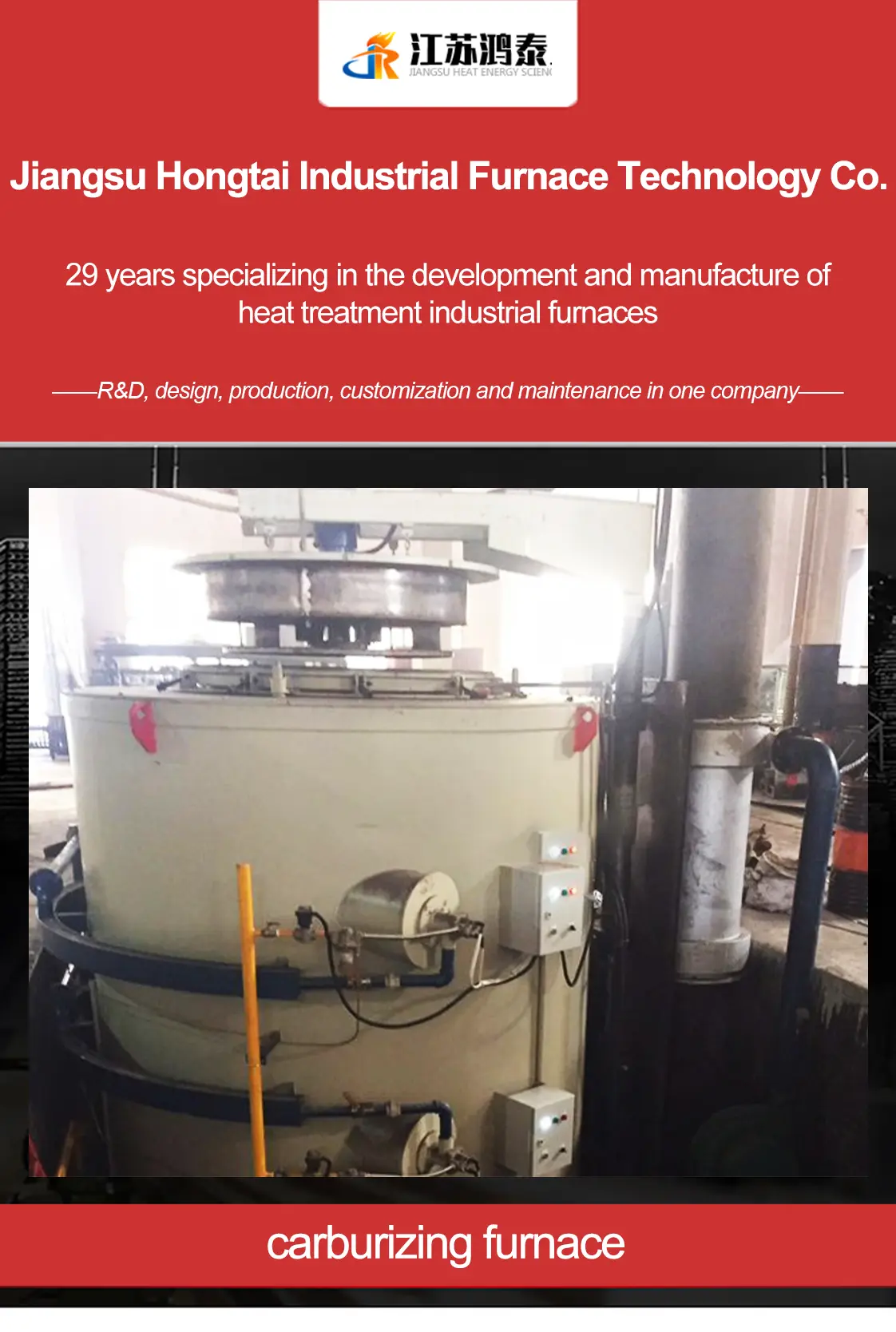
Structure
The carburizing furnace consists of furnace shell, furnace lining, lid lifting and lowering mechanism, sealing fan for furnace, muffle tank, heating element and electric control system. The furnace shell is welded by steel plate and section steel. The furnace lining is an energy-saving composite structure made of 0.6g/cm3 high-strength lightweight energy-saving refractory bricks, aluminum silicate fibers, diatomaceous earth heat preservation bricks and asbestos boards.
The lid lifting mechanism consists of motor, gear pump and other components. When the lid is opened, just press the button on the control box and the lid rises at a speed of 30 to 70 mm/sec. In the lifting shaft is equipped with two travel switches, when the cover rises, the lower travel switch automatically cut off the main circuit power supply of the carburizing furnace control cabinet, so that the heating element power failure and stop working, the upper travel switch is to limit the height of the lifting shaft to prevent the lifting shaft from lifting up too high and disengaged.
Furnace sealing fan mounted on the lid for stirring the atmosphere in the muffle tank and make the composition uniform, while the furnace temperature tends to be uniform. In the furnace cover is also equipped with three process tubes to the furnace chamber muffle tank: a casing upper end of the installation of three stainless steel dripper, three drip drip to the furnace moisture drip methanol, kerosene or other organic liquids, a variety of liquids can be adjusted, the casing on the ammonia holes can be used to the furnace ammonia for carbon, nitrogen co-penetration of carbon and nitrogen for the use of the (nitrogen not nitrogen penetration can be closed to the mouth of this pipe); a casing for the sampling pipe, the casing of the upper one of the pipe connector can be connected to the “N”, the “N” and the “N”, the “N” and the “N”. A casing for the sampling tube, the casing of the upper part of a pipe connector can be connected with the “U” glass tube manometer, used to monitor the furnace chamber muffle tank role is to maintain the furnace pressure to ensure that the carburization or carbon, nitrogen co-diffusion of the normal process, which is made of heat-resistant steel (castings).
Heating element by the electric alloy wire wound into a spiral, installed in the furnace lining on the wall, and through the lead out of the lead out of the furnace, carburizing furnace temperature by inserting a thermocouple into the furnace chamber, through the compensation wire will be sent to the signal of the automatic temperature-control cabinet, the temperature-control cabinet to automatically control, regulate and record the heating temperature of the furnace. The carburizing furnace is equipped with a cooling barrel (optional), which is used to store the treated parts, and there is a sand sealing groove on the lid of the barrel.
Operation specification
I. Preparation work before starting the furnace
1、Remove the carbon black in the furnace tank and check the sealing liner.
2、Check the circulating fan and motor, add grease to the bearings and pass water to the cooling water jacket.
3、Check the thermocouple position and oil pressure lifting mechanism.
4、Check the titrator, methanol, kerosene storage.
II, open the furnace operating procedures
1、Close the power switch.
2、Adjust the instrumentation automatic control device is normal before allowing power to heat up.
3、When warming up, start the fan.
4, the furnace temperature rose to 850 ℃, began to drip kerosene (or methanol).
5、After the furnace temperature reaches the required temperature, cut off the power supply of the furnace and fan before loading the workpiece. Then close the door of the furnace, turn on the fan and the furnace power supply, and operate according to the range.
6, after the workpiece out of the furnace, close the lid, continue to untouched fan, cut off the furnace resistance wire power supply, drop a small amount of kerosene.
7, the furnace temperature drops to 850 ℃, stop dripping kerosene.
8, furnace temperature down to 600 ℃, stop the fan, cut off the power switch.
